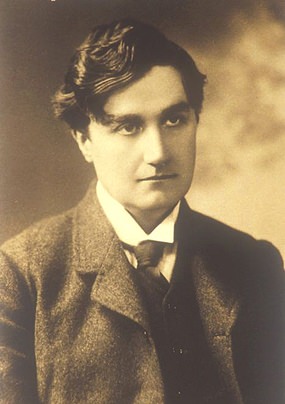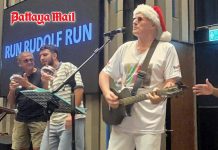
You’ll probably remember this week’s title’s evocative phrase, the last line of that visionary poem by the English poet and painter William Blake. It’s become best known as the stirring hymn-tune Jerusalem with music written by Sir Hubert Parry.
The poem was inspired by the apocryphal story that the young Jesus, accompanied by Joseph of Arimathea, travelled to what is now England during his so-called “unknown years”. Incidentally, you can find Blake’s illustrated manuscript online, where the text is written against a swirl of colour that seems to anticipate the vivid paintings of the twentieth century master Mark Rothko.
If you are English, as distinct from being British you probably know that 23rd April is St. George’s Day. It’s virtually England’s National Day though not celebrated as enthusiastically as it was during the reign of Queen Elizabeth I in the second half of the sixteenth century. That was the time of William Shakespeare, born on 26th April 1564 and who died on 23rd April 1616. This brief window in history is known as the Golden Age of English Music. The queen herself was fond of music and dancing and encouraged it among her subjects. Anyone in high society was expected by their peers to read music, sing or play an instrument. Music by English composers became popular as never before.
The leading composer of religious music was William Byrd, organist and composer to the queen. Other popular composers were John Taverner, Thomas Morley, Orlando Gibbons and Thomas Tallis. The favourite composer of songs and lute music was John Dowland. His first book of rather melancholy lute songs, published in 1597 became a bestseller.
It wasn’t until the late nineteenth century that English music regained its importance with the work of Hubert Parry, Charles Stanford, Edward Elgar, Frederick Delius and Ralph Vaughan Williams. English music thrived not only in Britain but became increasingly popular in concert halls around the world.
Ralph Vaughan Williams (1872-1958): Toward the Unknown Region. Irish Youth Chamber Choir, National Youth Orchestra and Choir of Great Britain cond. Vasily Petrenko (Duration: 12:20; Video 240p)
The evocative title of this short work is from a poem by Walt Whitman, whose writing influenced many young artists and musicians during the late nineteenth century. Vaughan Williams was fascinated by Whitman’s poetry and the collection of poems Leaves of Grass was a constant companion. The Sea Symphony of 1910, written for choir and orchestra uses Whitman’s poetry throughout.
A companion piece, which was actually finished before the symphony was Toward the Unknown Region first performed at the Leeds Festival in October 1907 with the composer conducting. He described it as a “song” for chorus and orchestra and it’s his first major choral work though rarely performed today. This is a shame for it’s a wonderful setting of the poem with superb choral writing, brilliant orchestration and soaring melodies.
This performance, recorded at The Proms in 2013 is fresh and captivating with superb sound quality too. Try using good quality headphones to enjoy the expansive spatial quality of the recording.
Edward Elgar (1857-1934): Enigma Variations, Op 36. St Petersburg Philharmonic Orchestra cond. Yuri Temirkanov (Duration 31:50; Video: 720p)
Elgar is best known for his Pomp and Circumstance Marches and especially the first one, composed in 1901 in which the middle section became the patriotic song Land of Hope and Glory. It’s always performed at the Last Night of the Proms and bawled out with infectious enthusiasm by hordes of flag-waving concert-goers. Oddly enough, the music came before the words. When King Edward VII heard the tune he told Elgar that he thought it would make a great song. The text was duly written by Arthur C. Benson, poet, essayist and writer of popular ghost stories.
One evening in October 1898, after a tiring day of teaching, Elgar sat down at his piano and started improvising. A melody caught the attention of his wife and Elgar began to improvise variations on it in different styles, reflecting the character of some of his friends. His original improvised ideas were developed and orchestrated and eventually the Enigma Variations came into being. By naming the main theme Enigma, the composer created a puzzle which has never been convincingly answered although it’s thought it might involve a hidden melody.
Elgar dedicated the fourteen variations “to my friends pictured within” and their initials appear in the score. The most famous is the profoundly moving ninth variation, known as Nimrod (12:50) which has become popular in its own right and sometimes played at British funerals, memorial services, and other solemn occasions. It is always performed at the Cenotaph in London on Remembrance Sunday. Over the years, this poignant, arching melody must have reduced countless people to tears.
 |
 |
 |





